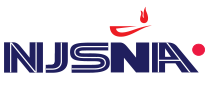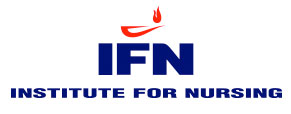How Nurses Can Recognize and Report Human Trafficking
 Human trafficking is a crime against humanity, modern-day slavery, and a serious public health emergency. It affects up to 30 million people, including 5 million children. People are bought, sold, and smuggled. They are often beaten, starved, and forced into sex work or jobs in factories, restaurants, or agriculture.
Human trafficking is a crime against humanity, modern-day slavery, and a serious public health emergency. It affects up to 30 million people, including 5 million children. People are bought, sold, and smuggled. They are often beaten, starved, and forced into sex work or jobs in factories, restaurants, or agriculture.
Nurses are in an ideal position to screen, identify, and support victims and survivors of human trafficking. On this page, we identify the role nurses play, how to recognize the signs of human trafficking, and how to report it.
The Role of Nurses in Identifying Human Trafficking
Human trafficking is a global problem. Victims in the U.S. may come from around the world, but many are U.S. citizens. In America, sex trafficking is more common than labor trafficking.
One of the most challenging issues is identifying human trafficking victims. Those from outside the U.S. may be unaware of their rights. They are often kept isolated, and contact with the outside world is controlled and limited by traffickers.
Victims are brought for emergency care only to treat major physical injuries or illnesses. In one survey, 28% of survivors of human trafficking said they had come into contact with a healthcare worker but were not identified as a victim.
Nurses are one of the few healthcare providers who interact with human trafficking victims consistently. They are also trusted professionals, so victims may see them as safe. Nurses should be aware of the warning signs and recognize situations that require investigation.
Nurses must be trained in the safety needs of this population and how to interview possible victims. Because the interview can be dangerous for the victim, those closest to them, and the interviewer, training should include:
- How to phrase the conversation
- Knowledge of immediate resources
- Follow-up care to ensure the safety of those involved
Additionally, nurses should be educated on how to establish and maintain personal boundaries. It is not unusual for nurses and other healthcare providers to experience emotional distress from these situations. Professional resources for counseling should be made available.
How Nurses Recognize Signs of Human Trafficking
Human traffickers seek people who are vulnerable. While anyone is at risk, evidence shows that people of color, people who are part of the LGBTQ+ community, and people who are both are more likely to be exploited. Traffickers also look for people in unstable living situations or who have experienced violence.
Traffickers target children and teens who run away. They also target those involved in the juvenile justice system or child welfare. Children who have a caregiver with a substance use issue or facing poverty may be sold.
Nurses working in urgent care, emergency departments, and public health or the community are more likely to encounter people held in captivity.
Nurses should watch for general signs that an adult or child is held captive by human traffickers. According to the International Council of Nurses, these signs can include:
- The patient appears to have suspicious documentation.
- They are not registered with the local schools.
- The patient seems to have traveled to the U.S. without understanding the process involved.
- The patient does not have control of their money, identification, or passport.
- Their real name or personal details appear to have changed.
- They seem to have a limited understanding of time.
- The patient might tell you they are visiting the area but cannot offer details about arrival or departure dates, an address, or a phone number.
- They may have difficulty speaking with healthcare staff because they are not allowed to speak for themselves or because of a language barrier.
- They look neglected, malnourished, and lack self-esteem.
- The patient has few personal possessions.
- There are signs of physical abuse.
- The patient has poor eye contact.
- They display closed body language; they are withdrawn and submissive.
- The patient might be nervous, anxious, fearful, and depressed.
- They display post-traumatic stress disorder, suicidal ideation, or mood swings.
- The patient has old or untreated injuries and history of the injuries is not believable.
- Numerous inconsistencies are present in their story.
- They are vague about their address or where they live.
The National Human Trafficking Resource Center has a checklist for healthcare professionals to help identify victims. Included are general red flag indicators and specific ones for labor or sex trafficking victims.
Nurses should also consider physical and mental health indicators that may help them identify victims.
Types of Human Trafficking
There are several types of human trafficking. The traffickers exert power and control over their victims. They use coercion, threats, intimidation, isolation, and physical and emotional abuse.
New victims may be indoctrinated with physical and sexual abuse or the abuse may be used as a “punishment.”
Human traffickers use mental, emotional, and physical power to force their victims into one or more forms of trafficking.
- Sex trafficking: Individuals may be forced into prostitution in residential or commercial front brothels, truck stops, hotels, or at major sporting events. Sex trafficking also includes forced online exploitation, including pornography and stripping.
- Labor trafficking: Adults may be forced to work to pay debts that can never be paid off because of poor wages and excessive interest rates. This may include domestic work, begging or peddling, construction, factory or fishing industry labor, car washes, restaurants, nail salons, or other unskilled work.
- Criminal activity: Adults and children may be forced into street crime, begging, benefit fraud, or cultivating cannabis or other drug activity. Young adults and some children may be forced into marriages.
- Organ harvesting: The demand for organs is growing faster than the supply, which opened the door to illegal trade and trafficking. Organized crime groups and individual organ brokers have expanded to a worldwide market. Migrants are particularly vulnerable, and governments are not always willing to prosecute traffickers.
COVID-19’s Impact on Identifying Human Trafficking
The lockdown measures to “flatten the infection curve” of SARS-CoV-2 has driven the human trafficking trade further underground. It has also made it more difficult for state authorities to arrest and prosecute offenders. Aid agencies are challenged to provide services to victims.
During the pandemic, human traffickers adjusted their business model and took greater advantage of digital communication. The economic consequences of COVID-19 have also made the inequalities at the root of human trafficking worse.
Additionally, school closures have meant many children didn’t have access to education, shelter, and nourishment. It also increased the risk of domestic violence and child abuse, affecting the vulnerability of this population.
Lockdowns likely contributed to the isolation and controlled movements that are a common part of human trafficking.
The United Nations Office on Drugs and Crime calls for safeguarding access to justice, remaining flexible and adaptable to meet the needs of the community. It advises remaining vigilant to address new crime patterns. It also recommends systematic data collection and analysis on the impact that COVID-19 has had on human trafficking.
The Importance of Providing Trauma-informed Care to Suspected Trafficking Victims
Suspected victims of human trafficking can present with post-traumatic stress disorder, suicidal ideation, and mood swings due to the trauma inflicted on them. Nursing research supports using TIC to reduce or avoid retraumatizing individuals accessing healthcare.
TIC is a patient-centered approach that guides care to prevent retraumatization. Nurses should use TIC with all patients.
It is important to note that a history of trauma is not usually immediately evident. Patients may present with past trauma from other events, such as domestic violence, assault, or abuse, as well as the conditions of their society and cultures.
The framework requires healthcare professionals to be aware of trauma survivors’ experiences and allow this to inform the development of policies and practices. For example, patients who have survived trauma often face barriers to transportation. This may help inform cancellation policies.
Additionally, research finds that people exposed to trauma may seek care but do not consistently stick with the prescribed treatments.
A small study demonstrated that providing care through a trauma-informed lens could increase patients feeling safe and respected. This also increases the likelihood they would feel confident enough to live independently.
How Nurses Report Identified Human Trafficking
Legal requirements mandating reporting differ from state to state. Not all situations require mandatory reporting. It is important to be aware of how HIPAA regulations impact reporting and confidentiality.
Every situation is unique, which requires a victim-centered approach. Not all victims are comfortable talking about their situation. Additionally, not all are ready to seek help. In many instances, seeking help and sharing information may put the victim, their family, or the healthcare professional at risk from the trafficker.
Nurses have options to help patients who have disclosed they are victims of human trafficking. Nurses may give the individual the number to the National Human Trafficking Resource Center (NHTRC).
The organization maintains a hotline (1-888-373-7888) for victims to help connect them as survivors with services and support. The patient may feel it is dangerous to have the number written down. In this case, ask them to memorize the number.
Patients in immediate and life-threatening danger must be protected. Follow your organization’s policy for reporting.
Whenever it is possible, involve the patient in the decision to report to law enforcement. This reduces the chance of retraumatization from healthcare professionals interfering with or removing control of their own decision-making.
For example, offer options for services, resources, or reporting that would ensure their safety rather than making those contacts without the patient’s permission.
However, if the patient is a minor and you do not follow mandatory state reporting laws and your organization’s policies for child abuse, you may face the consequences of your noncompliance. All information about the patient’s injuries, illness, and treatment must be accurately documented in the patient chart.
Nurses are in a position to make a difference in the lives of people who are victims of human trafficking. Regardless of the setting, it is crucial to have a personal and organizational plan for handling a difficult trafficking situation.
(This story originally appeared in the Nurse Journal.)




